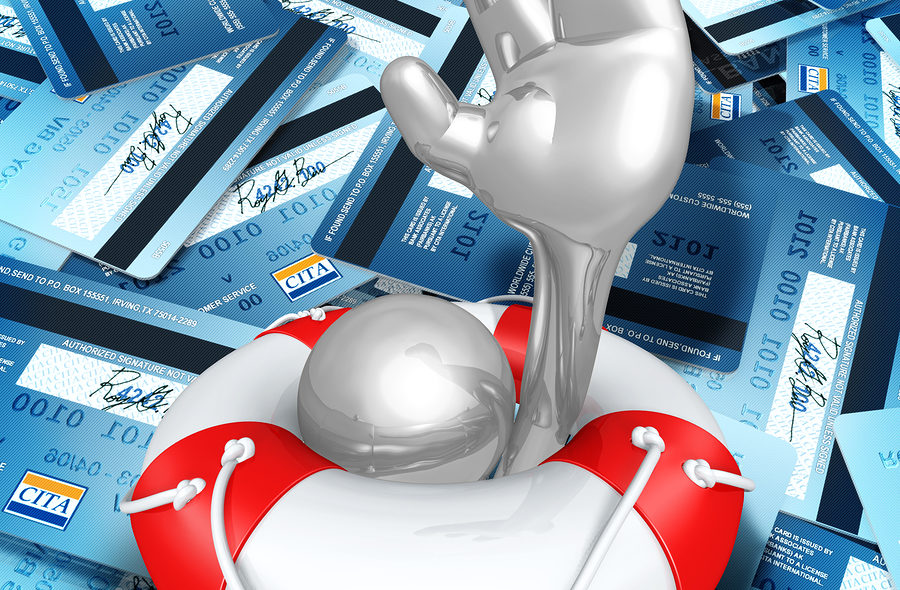Credit card debt is a problem that countless consumers struggle with. But according to recent data provided by Experian, Gen X consumers carry more credit card debt than any other generation.
Experian’s data showed that Gen X holds the highest average credit card balances at $8,658. As members of Gen X approach middle age, many of them raising families, they are also struggling to pay down credit card debt they have been holding since their 20s.
It is not exactly clear what has caused this disparity in how much credit card debt these consumers carry. Financial experts attribute it to the housing crisis and recession of 2008. Writer, Ada Calhoun, highlights this disparity in her book, “Why We Can’t Sleep: Women’s New Midlife Crisis.” Calhoun is a member of Gen X and has faced her own struggles with escaping her debt. Her book focuses on the struggles of women in Gen X, born between 1965 and 1980, in finding financial stability.
The following tips can help you pay down debt and achieve financial stability.
Modify Expectations
The first of these tips is to acknowledge the problem and modify the person’s expectations. Look at all outstanding credit card statements and get a good idea of what the total balance owed is no matter how hard that may be. The whole “keeping up with the Joneses” mindset gets many people into financial trouble. The perfect lifestyle may simply be something you may not be able to afford. It can help to change those expectations and opt for a simpler, lower-cost lifestyle at least for the time being so that debt can be paid off and not incurred further.
Create a Budget
Write down all expenses and income earned every month. Make sure that the necessities are covered and truly examine where the money is going every month. Try to eliminate expenses that are not necessary for daily living. A budget does not mean a person cannot ever splurge or spend money on himself or herself. It simply means enough money needs to be left over to pay for these extra expenses instead of relying on a credit card to pay for additional expenses. It also means treating yourself in a more frugal and regimented manner.
Make On-Time Payments Above the Minimum
One of the worst mistakes that cardholders can make is to only pay the minimum amount due every month. At that rate, the person is only paying down the interest incurred each month. The consumer does not necessarily need to do this every month on every single card. On the contrary, financial experts usually recommend the consumer look at the interest rate for each credit card, taking the card with either the highest interest rate or the highest balance first. Pay the minimum payment on all other cards while throwing any extra funds towards the card the consumer wants to pay down first. Once that card is paid down, focus on the next and the next until all are paid off. This method is known as the snowball method, and it has proven successful for many consumers.
Consider Debt Consolidation
If the consumer has several different credit cards with large balances, it may be wise to take all those balances and consolidate them onto one credit card through a balance transfer. Many credit card companies offer special rates for balance transfers, giving the cardholder zero percent introductory APR for 12 to 18 months following a balance transfer. The key is, however, to pay the debt down during that period. Most of these promotional offers expire eventually, and the cardholder will begin incurring interest at that point, thus defeating the point of a balance transfer.
Be Creative
Lastly, it pays to be creative when finding extra money to apply towards the debt. If possible, pick up an additional contract or freelance work or a second, part-time job. Use the money earned by that job to pay down the debt. Take money received through a bonus or tax refund and apply those funds towards the debt. Any extra amount of money being paid towards the outstanding balance will help in the end.
As bankruptcy attorneys, we see credit card debt as one of the most common problems facing those with serious financial challenges. It is not surprising with the high interest rates, unreasonable fees, harassing debt collection calls, penalties and never-ending minimum payments that do not even make a dent in your actual debt. We offer additional tips for eliminating credit card debt on our blog.
Filing for bankruptcy is also a viable option for those struggling with insurmountable credit card debt. Chapter 7 is the fastest form of consumer bankruptcy and forgives most unsecured debts like credit card debt, medical bills and personal loans. There are certain qualifications a consumer must meet in regards to income, assets and expenses to file for Chapter 7 bankruptcy, which is determined by the bankruptcy means test.
Please click here to read more.
If you have questions on this topic or are in financial crisis and considering filing for bankruptcy, contact an experienced Miami bankruptcy attorney who can advise you of all of your options. As an experienced CPA as well as a proven bankruptcy lawyer, Timothy Kingcade knows how to help clients take full advantage of the bankruptcy laws to protect their assets and get successful results. Since 1996 Kingcade Garcia McMaken has been helping people from all walks of life build a better tomorrow. Our attorneys’ help thousands of people every year take advantage of their rights under bankruptcy protection to restart, rebuild and recover. The day you hire our firm, we will contact your creditors to stop the harassment. You can also find useful consumer information on the Kingcade Garcia McMaken website at www.miamibankruptcy.com.

